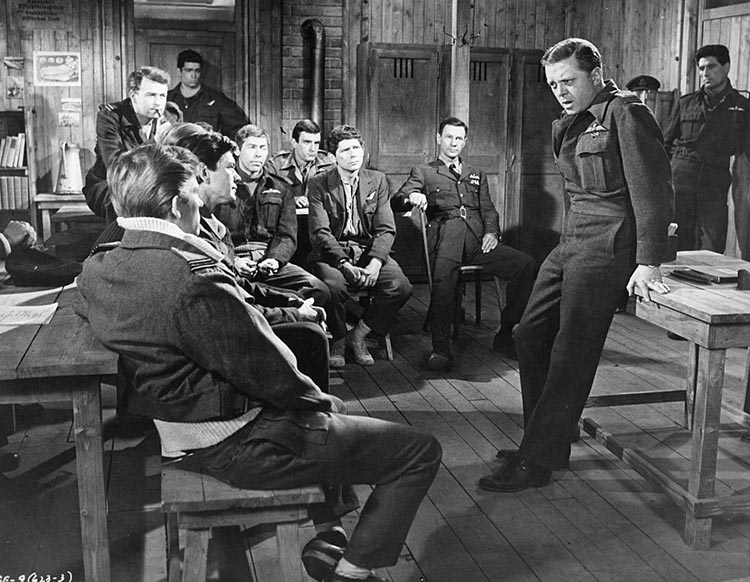
When people in the UK were polled as to what movie they would most like to watch on Christmas Day, the number one choice among male respondents was The Great Escape.
The classic 1963 film depicting the unbelievable breakout of 76 prisoners from a German POW camp during WWII has long held an inviolable place in any library of essential movies for men. It’s a film fathers like to share with their families, and husbands like to enjoy by themselves while their wives are off on a weekend trip.
Part of The Great Escape’s appeal to men is obvious: it’s got a wartime setting, action, suspense, a crackerjack cast that includes James Garner, Charles Bronson, and Steve McQueen, and, of course, one of the greatest cinematic motorcycle stunts of all time.
But the draw runs deeper, to the elements of the story itself, which though fictionalized in some respects, contain many details that are true to the real events on which the film is based.
Digging into these elements common to both the cinematic and historical Great Escape reveals why the story resonates so much with men, and offers a window on the landscape of the masculine heart.
Intolerance for Subjection
Stalag Luft III, a prisoner-of-war camp located deep in Nazi-occupied Poland, housed thousands of Allied airmen who had fallen into German hands. Constructed with barrack blockhouses that were raised on stilts (to enable guards to keep an eye on tunneling attempts); built atop sandy soil (to make it easy to spot the darker soil produced through excavation); and surrounded with seismographic microphones (to pick up on the vibrations created by digging), two barbed-wire-topped fences, and numerous watchtowers equipped with high-beam spotlights and gun-wielding sentries, the camp was considered “escape proof.”
There also existed a psychological factor that perhaps worked against escape attempts to an even greater extent than these physical impediments. Rather than being the kind of cruel, hardship-ridden camp from which men would be desperate to flee, the conditions at Stalag Luft III were in fact fairly hospitable. The prisoners were not tortured or mistreated. Their rations were decent (at least when combined with the foodstuffs which arrived in the Red Cross care packages they were allowed to receive). Barracks were spartan but snug and sanitary. Robust recreational opportunities were offered, from playing in bands and orchestras, to performing in biweekly musicals and plays, to reading books in the library, to participating in debating societies, art classes, and games of basketball, softball, and football. The camp wasn’t the Hilton, and simply being detained in the same spot for several years could drive a man mad, but it wasn’t the most onerous place to bide one’s time.
This was by the Germans’ design. Stalag Luft III was run by the Luftwaffe, which had a culture that elevated gentlemanly respect between all fellow air force officers — even those belonging to the opposing side — and a commandant in Friedrich Wilhelm von Lindeiner who despised the Nazi regime and sympathized with his prisoners. Von Lindeiner not only treated his inmates well out of a sincere sense of chivalry, but in the belief that making them comfortable would sap their desire for escape, contenting them to wait out the rest of the war from behind the walls of the camp.
While some prisoners were indeed placated, a significant contingent was not.
No comments:
Post a Comment